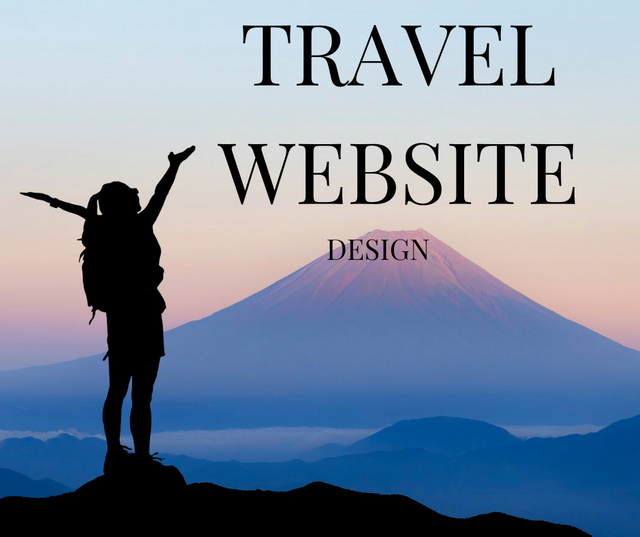Are you planning to launch a travel website to showcase your services and attract customers? Whether you are a tour operator, travel agency, or hotel owner, your website is your digital storefront, and it needs to be designed to provide a seamless user experience. In this article, we will explore the essential elements of travel website design and how to optimize it for SEO and user engagement.
Understanding the Basics of Travel Website Design
Before we dive into the specifics, let's start with the basics of travel website design. The following are the critical elements that every travel website should include:
Clean and professional design
Your website's design should be clean, professional, and easy to navigate. Your website's look and feel should reflect your brand and the services you offer. It should also be visually appealing, using high-quality images and videos to showcase your destination and services.
Intuitive navigation
The navigation menu should be easy to understand and access. Visitors should be able to find the information they need quickly and without confusion. Use clear headings and categories to organize your content, and avoid cluttering your menu with too many options.
Responsive and Mobile-Friendly
Your website must be optimized for mobile devices as more and more people use their smartphones to access the internet. A responsive website design will ensure that your website looks great on any device, providing a seamless user experience.
Fast loading speed
Your website's loading speed is crucial to retaining visitors. Slow-loading websites can lead to frustration and drive away potential customers. Optimize your website's loading speed by reducing image sizes, minimizing code, and using a reliable hosting provider.
Clear Calls-to-Action
Every page on your website should have a clear call-to-action (CTA) to encourage visitors to take the next step. Whether it's booking a tour, signing up for a newsletter, or contacting you for more information, make sure your CTA is prominently displayed and easy to find.
Optimizing Your Travel Website for SEO
Search engine optimization (SEO) is the process of optimizing your website to rank higher on search engine results pages (SERPs). Here are some tips for optimizing your travel website for SEO:
Keyword Research
Start with keyword research to determine what phrases your potential customers are searching for. Use those keywords throughout your website's content, meta descriptions, and image alt tags.
Quality Content
High-quality, informative content is essential for both SEO and user engagement. Create content that answers your customers' questions and provides valuable insights into your destination or services.
Local SEO
If you are targeting customers in a particular location, optimize your website for local SEO. Claim your Google My Business listing, use location-specific keywords, and include your address and contact information on your website.
Link Building
Build high-quality backlinks to your website to improve your website's authority and search engine ranking. Reach out to industry influencers, travel bloggers, and local directories to get your website featured and linked.
Designing a User-Friendly Experience for Your Customers
Your website's design should be centered around providing a user-friendly experience for your customers. Here are some tips for designing a user-friendly travel website:
Use high-quality images and videos
Use high-quality images and videos to showcase your destination and services. This will not only attract visitors but also give them a sense of what to expect when they book with you.
Provide detailed information
Provide detailed information about your destination, services, and pricing. Use clear headings and categories to organize your content, and break up long paragraphs into shorter, easy-to-read sections.
Make it Easy to Book or Inquire
Make it easy for customers to book or inquire about your services. Provide clear calls-to-action, easy-to-use booking forms, and multiple ways to contact you, such as phone, email, and social media.
Personalize the experience
Personalize the experience for your customers by offering customized tour packages or suggested itineraries. Use data from previous bookings or customer preferences to recommend relevant services and destinations.
Use Reviews and Testimonials
Reviews and testimonials from satisfied customers can go a long way in building trust and credibility. Showcase reviews and testimonials prominently on your website, and encourage customers to leave feedback.
Offer Additional Resources
Offer additional resources, such as travel guides, maps, and travel tips. This not only adds value to your website but also positions you as an expert in your field.
Conclusion
Designing a travel website that It provides a seamless user experience and is optimized for SEO can be a daunting task. However, by focusing on the basics of website design, optimizing your website for SEO, and designing a user-friendly experience for your customers, you can create a website that attracts visitors and drives bookings. Remember, your website is your digital storefront, so make it count.
Also, read
Best Travel Website: A Guide to Planning Your Next Adventure
FAQs
- What is the importance of a responsive website design for travel websites?
A: A responsive website design ensures that your website looks great on any device, providing a seamless user experience and retaining visitors.
- How can I optimize my travel website for SEO?
A: Start with keyword research, create high-quality content, optimize for local SEO, and build high-quality backlinks.
- What are some essential elements of travel website design?
A: Clean and professional design, intuitive navigation, responsive and mobile-friendly design, fast loading speed, and clear calls-to-action.

- How can I personalize the experience for my customers?
A: Offer customized tour packages, suggest itineraries based on customer preferences, and recommend relevant services and destinations based on data from previous bookings.
- Why is it essential to showcase reviews and testimonials on my travel website?
A: Reviews and testimonials from satisfied customers can go a long way in building trust and credibility with potential customers.
